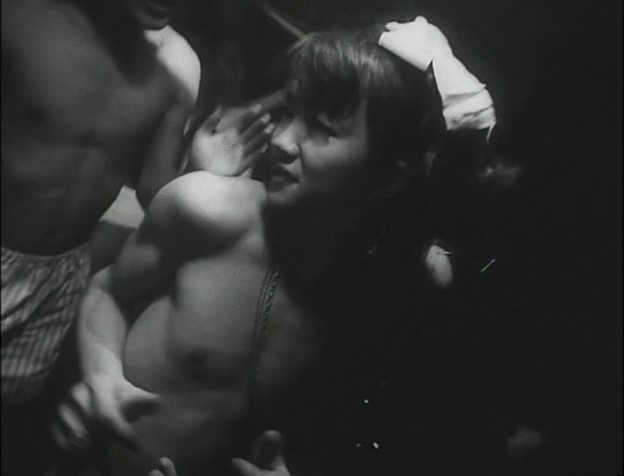by Douglas Messerli
Toshio Matsumoto (screenwriter and director) Bara no sōretsu (Funeral
Parade of Roses) / 1969, USA 1970
I had heard of Japanese director Toshio Matsumoto’s outrageous
melodrama of 1969 earlier, but had almost forgotten about it until my Facebook
friend Joe Amato reported, coincidentally on my birthday, that he had just seen
Funeral Parade of Roses, and asked
several others as well had we ever seen it? I had not, but fortunately another
friend, Aldon Nielsen soon after posted a link where we might watch it for
free, which led me to seek it out as an odd birthday activity.
Eddie (Pîtâ) a transsexual
“gay” (today seeming contradictory terms, which are nonetheless appropriate to
the time in which movie was made when those who engaged in homosexual behavior
of any kind were described as “roses” in Japanese culture) is in bed with Jimi
(Yoshiji Jo). The two, a bit as in Resnais’ Hiroshima
mon amour and Smith’s Flaming
Creatures, are engaged in deep, lustful sex, their bodies becoming almost
inseparable. If Eddie later seems a bit unsure of her/his sexuality, it is
clear she loves Jimi, and is willing to do almost anything to keep him near.
The voyage of these two,
Eddie and Jimi—accompanied by various pop songs, contemporary and
classical—take us through Tokyo’s underground world, filled with other
transsexuals and “roses”—as I’ve hinted, the sexual lines are not clearly
drawn—as they talk about their sexuality without being able successfully to
explain it even to themselves. And accordingly, we might describe these travels
as a kind of “parade,” each of them desiring to be seen while also hiding
within their own sexual confusions and, given the level of Japanese fascination
with the homophobia of the day, necessarily somewhat secretive.
Yet Matsumoto’s film
attempts to accomplish, despite its rather forbidden characters, a movie that
is also about filmmaking. If this work’s various characters are all about
identity (or lack of identity), so too are they attempting to discover (or
rediscover themselves) through the outsized figures they are portraying on
screen.
One might easily argue that
Matsumoto’s “roses” stand in for the strongly heterosexual figures of Godard’s Contempt and Pierrot le Fou, as the director here keeps calling “cut,” which
forces us to see this parade of identities as an truly artificial thing such as
the film shoots of Contempt—in fact,
that first scene is, in some senses a reenactment of the first scene of
Godard’s film—while at the same time presenting us a wide-range of cinematic
genres as in Pierrot le Fou with its actors constantly looking
in the rear-view mirror or turning to the backseat as if to seek our approval.
Los Angeles, June 1,
2018
Reprinted from World Cinema
Review (June 2018).







No comments:
Post a Comment